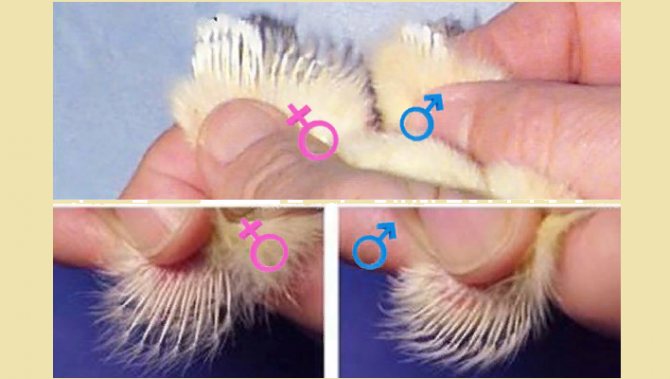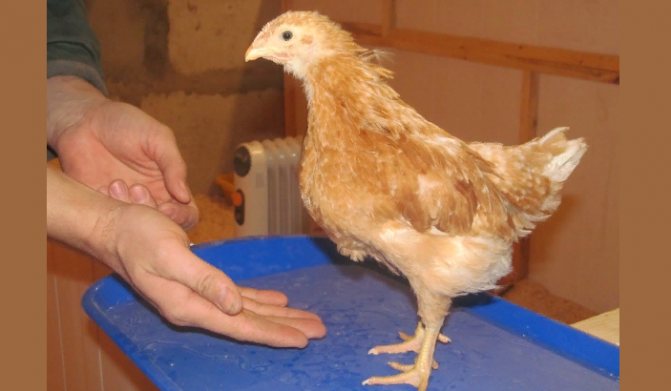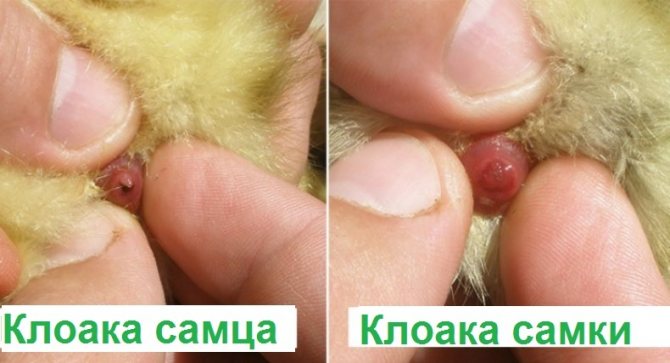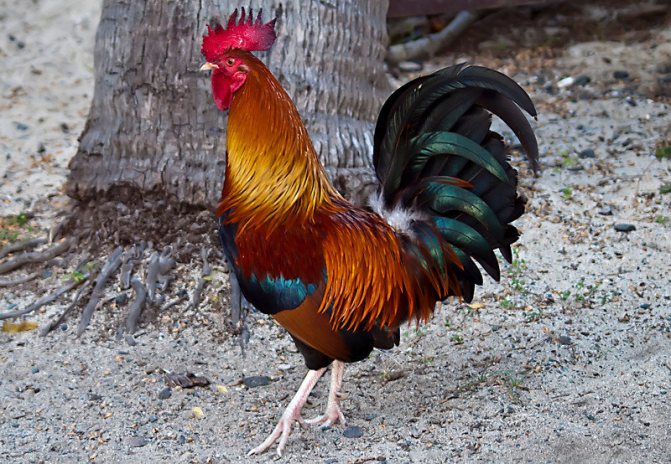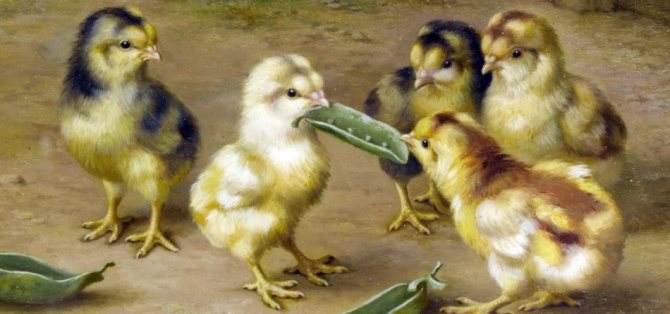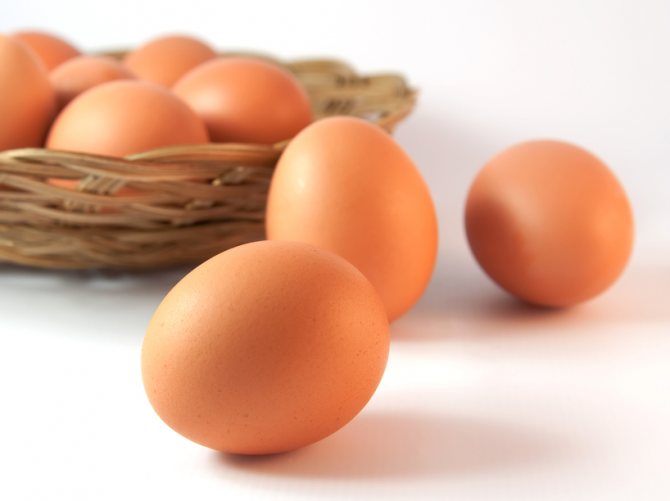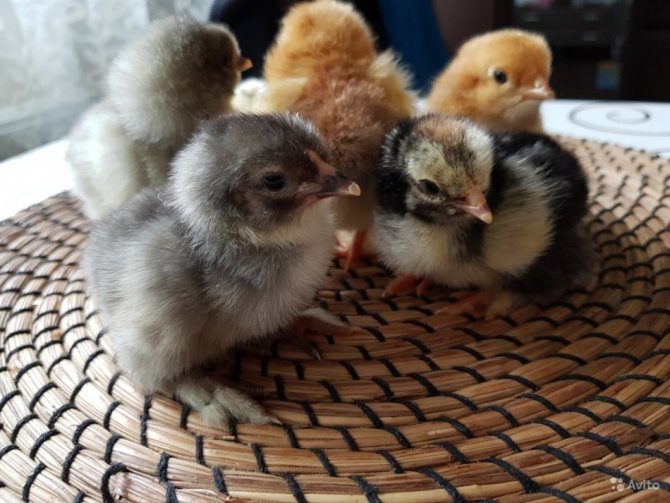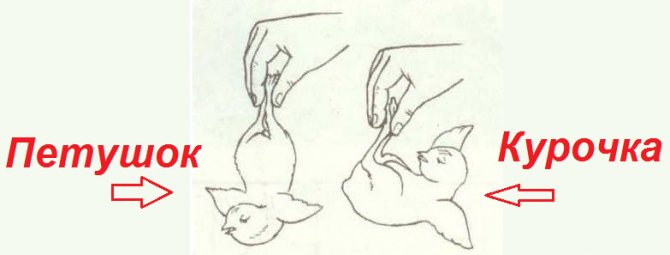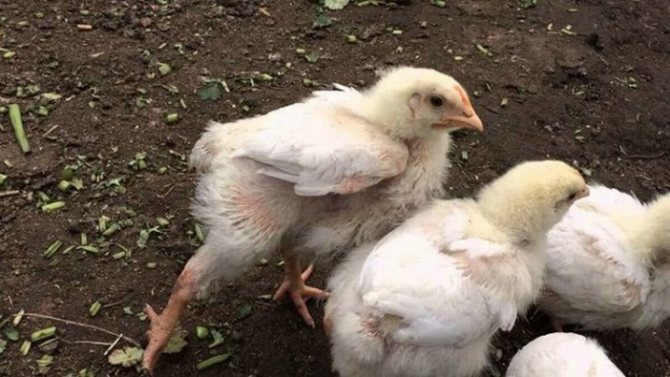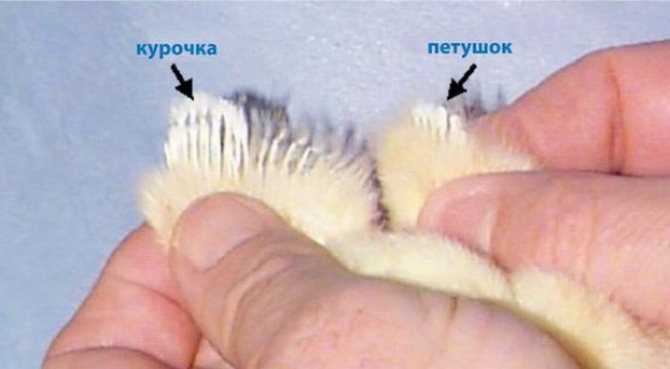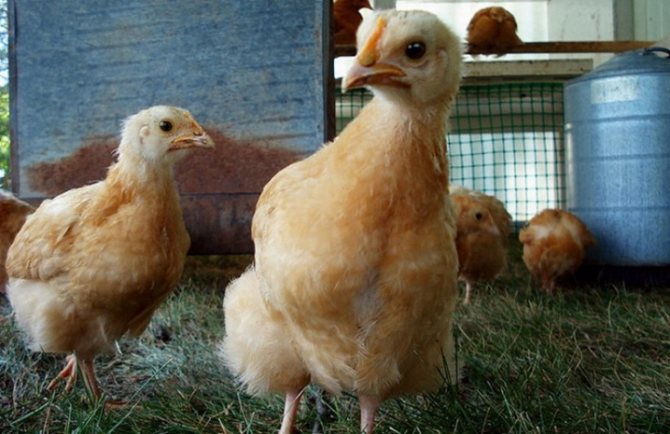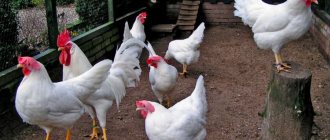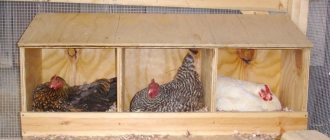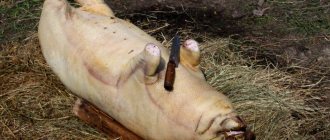269
no comments yet
0
The author of the article
Rasskazov Pavel
Reading time: 3 minutes
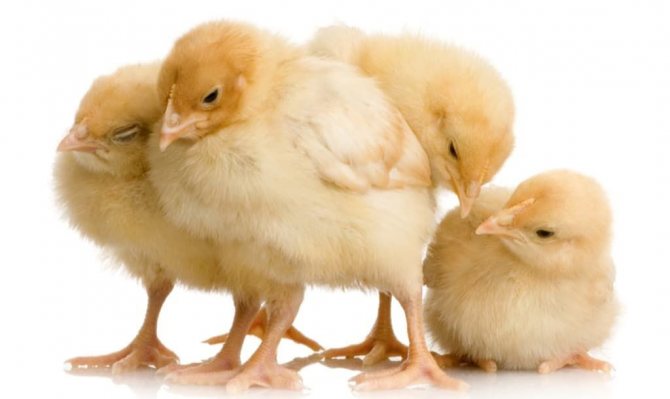
Young animals are acquired for the purpose of obtaining egg or meat products, for breeding or breeding a breed for sale. Hence, there is a need to determine the sex of individuals.
Proven methods
People who have worked in poultry farms all their lives know how to accurately determine the gender of a chicken. However, there are ways that farmers who are inexperienced in these matters can also use them. For example, in the first half of the 20th century, Vensexig was used in Japan. The essence of the method is to study the cloaca. This method of determining the sex of a chicken is widely used by the world community.
When using this technique, it is possible to injure the cloaca or infect the chicks with an infection, therefore, its implementation requires a particularly careful attitude and accuracy of execution. The instructions on how to determine the sex of a chicken indicate that Vensexig is carried out in the first 6-15 hours after the chicks are born. It will be almost impossible to determine the sex of the chicken at a later date, because after 15 hours, the sexual characteristics are gradually smoothed out. How to distinguish chickens by sex using the Vensexig method:
- assess the health of the chick;
- cleanse the rectum of feces, for which, firmly taking the chick, press the abdomen from both sides with gentle massage movements;
- turn the chick over and place its legs between the ring finger and the little finger of your right hand;
- do not squeeze the chicken too hard, otherwise it may get a painful shock;
- after the chick is carefully fixed, the cloaca should be stretched and turned outward: on the outer surface of the males there is a small bulge, in the females it is absent.
How to distinguish a rooster chicken from a hen by the color of plumage in purebred chickens? In autosexual chicken breeds, the sex of the chick can be distinguished by external signs, taking into account external data. You can distinguish the offspring of Adler chickens with roosters by the color of the cannon: the males are lighter in color, and the chickens are fawn. At day old, male representatives of the dark Brahma breed are painted in a light color, and females have dark dots in the area of the head and back.
In order to clearly understand how to determine the sex of a day-old chick, it is necessary to take into account the characteristics of the crosses. If the males are dark in color, and the chickens are white, then in the chickens, on the contrary: the females will be dark in color, and the males will be yellow. This method of determination is one hundred percent. In broilers and other large breeds, the differences in individuals will be visible almost immediately by weight data: in the first weeks, the hens are always larger than the males, at the age of one month, everything changes.
Day-old chick care
Some farmers believe that chicks should be fed on the first day after birth. Others advise you to wait a day. The fact is that after leaving the egg, the chickens have enough nutrients that they received while still inside. The supply runs out exactly after 24 hours. After this time, it is imperative to feed and water the babies. For both broiler chicks and layers, it is best to use a special Start mix (of the appropriate variety).
You can also feed the chicks with regular boiled eggs and millet. After a couple of days, they usually begin to give cottage cheese.
Drinking bowls for chicks should be used special. Ordinary small chickens can get in or just fall and get wet. This often causes the death of chicks. The fact is that when the feathers get wet, the baby's body is severely hypothermic. This is especially true for broilers. If you overlook a wet chick, dry it as quickly as possible and place it in the warmest place.
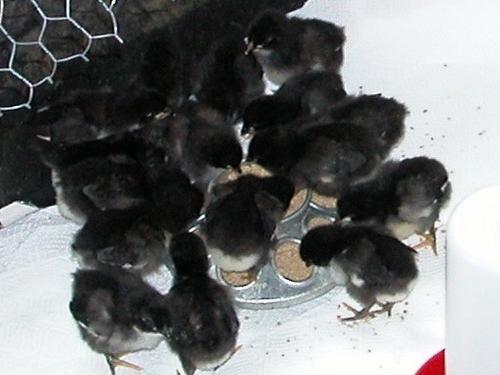

People's councils
If you have a chicken and a rooster, the differences should be obvious. Chickens were domesticated by humans many years ago. Over the years, people have learned to distinguish between girls and boys on some grounds. Determination by the folk method is absolutely not inferior to the scientific one and gives good results. How to determine the sex of a day old chick using the inverted method? The chick should be carefully taken by the paws and tipped upside down:
- males stretch their necks;
- the hens are trying to retract the head.
How to distinguish a chicken from a rooster by examining the wings? Determining gender at one day of age is a complex process, because the main distinctive features have not yet been formed. Inspection of the wings allows you to fairly accurately distinguish between chicks by sex. In females, plumage appears earlier than in males. In cockerels, the flight feathers are longer, respectively, and the wingspan is larger.
The chick is carefully taken in hands and the wing is extended. In the female, the feathers are rarely placed and have different lengths; in males, all the feathers are of the same size, densely planted. In the early days, the sex of the chicks can be distinguished by the color of the wings. Often, the wing of the cockerel has a lighter shade. With age, this sign smoothes out, the color of the plumage changes.
How to distinguish a hen from a rooster among grown up young? At the age of two weeks, distinctive features have already been formed. In males, a comb is clearly visible on the head, the face becomes rounded, and the skin turns red, spurs form on the paws, and plaits are visible in the tail. At the age of three months, the comb becomes even larger and acquires a more saturated shade. In females, the comb turns red only when they reach the age of 4-8 months, depending on the breed characteristics.
At an older age, it is already possible to determine the sex of a chicken by its appearance with one hundred percent accuracy. For roosters, a characteristic difference is a well-developed scarlet comb and earrings. The paws of males become massive, spurs and braids are clearly visible. Females are always smaller in size, neatly folded, have good plumage.
Feeding
Adult birds
A balanced diet is required. Preference is given to dry food, mixed fodder. Wet mash stains the lush plumage of birds. Pecking out the stuck remains of chickens inflict injuries on each other, take on an untidy look.
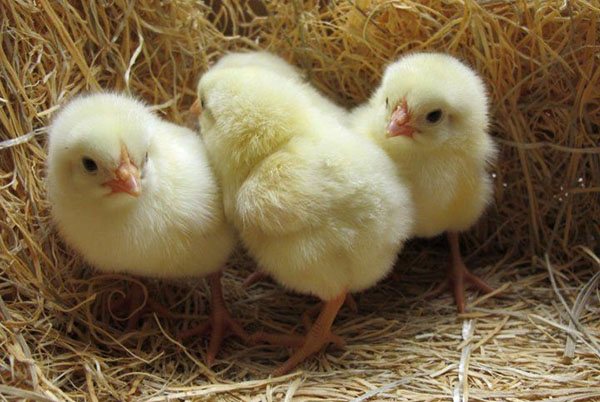

In the summertime, 1/3 of the daily consumption is green mass, pasture. Of the herbs, legumes, cereals, nettle, meadow clover, woodlice, dandelions, purslane, pig, alfalfa, peas, oats, wheat are considered the most suitable. After walking, the bird is fed with grain, mixed feed.
Important! Check if black nightshade, hellebore, cicuta, speckled hemlock, and crocus are growing on the run. These herbs are poisonous.
The daily rate of compound feed, grain (corn, wheat, oats) per head is 150-155 g. At the onset of obesity, they put on a diet, reducing the amount of feed to 80 g.
In winter and spring, the green mass is replaced with sprouted wheat grains, pumpkin pulp, zucchini, carrots, steamed nettles, dried beet and carrot tops, spruce, pine, fir needles.
Vitamin supplements are required. With a low egg yield, oatmeal is added to the diet. In winter, wet food is warmed up.
With a combined diet, feed is given 3-4 times a day, alternating dry and wet mixtures.
After hatching, the chickens are fed with chopped boiled eggs, cottage cheese, corn porridge.
On the 11th day, they begin to give complete chicken feed.
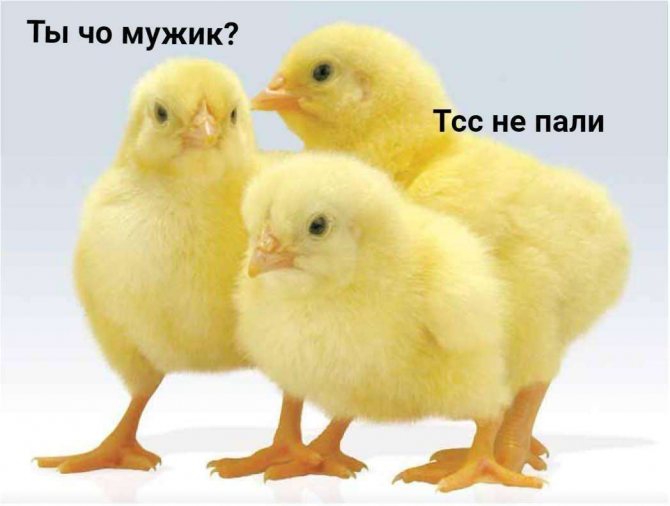

Feeding scheme:
- 1-30 days 6-8 times, at regular intervals,
- 30-60 days - 4 times,
- after 60 days - 3 times a day.
Bioacoustics method and DNA analysis
How to distinguish chicks by sex using any manual method is well known to every experienced poultry breeder. For beginners, most of the described methods will seem very complicated, so scientists have invented a bioacoustic system that allows you to find out the gender by voice data. The device analyzes the sounds emitted by chickens, and the sign lights up on the board: "male" or "female".
There is one more option: by voice data and without using this device. For example, in the Orpington and Cochinchin breeds, females make characteristic sounds that resemble a squeak. Quacking is typical for roosters. How to distinguish chicks by sex using a bioacoustic system, you can watch the video.
The sex of the young livestock can be found out using laboratory tests. the DNA method works with 100% accuracy. According to blood tests or biomaterials from the base of the wing in the laboratory, they can even tell about a genetic predisposition to diseases in a particular individual. This method is used for the most part in breeding factories.
How to find out your gender early
You can find out the sex of the future chick even before its birth by the shape of the egg. This Method is often used when raising chicks in an incubator. Almost every experienced poultry farmer knows how to determine the sex of a chicken in an egg. This knowledge gives farmers great advantages in successfully breeding chickens. There is an opinion that testicles with sharp ends contain cockerels, and those with blunt ends contain females.
You can find out the gender of a chicken by the structure of the shell. Males sit in rough testicles, and hens sit in completely smooth testicles. There is also a more scientific approach. To do this, you need an ovoscope. How to determine the sex of a small chicken in an egg using an ovoscope?
- the incubation material must be fully illuminated from one end to the other;
- if the air chamber is on the blunt side, there is a cockerel in the egg, and a chicken on the sharp side.
To find out how to determine the sex of a chick using a regular egg, it is necessary to take into account the breed data. It will not be difficult to distinguish between broilers, cockerels and chickens by the shape of an egg or with the help of an ovoscope, but for a breed such as maran it will be difficult. Their eggs have the correct shape, therefore, even with an ovoscope, it is not always possible to accurately find out the sex of the future offspring.
Generalization and conclusions
How to determine the sex of day old chicks is a question that worries many farmers. It is clear that for experienced people this is not a problem at all, they can even tell you how to find out the sex by egg. For novice poultry farmers, most of the methods will seem very complicated, for example, not everyone can do the manipulation of viewing the genitals in a day old chicken. There are simple folk methods that are practically not inferior to Vensexig.
How to determine gender by egg, you can find out from the corresponding video. The incubation material differs in shape. There is such a device as an ovoscope. It is often used when raising offspring in an incubator. It is used not only to pre-check gender, but also to control the optimal temperature in the incubator. During the entire period, the eggs shine several times.
Breeding chickens of this breed
Pure breed chickens are rare. German and Hungarian breeding material has proven itself well. There are several domestic breed lines.
The cost of weekly chickens from 300 rubles, two-weekly from 350 rubles, hatching eggs from 600 rubles, half-year-old poultry from 5000 rubles.
The optimal time for hatching chicks is February. In the spring, the chicks can already be released for walking, and in the summer the chicks will begin to rush.
In order to avoid closely related crossing, leading to the degeneration of the breed, the appearance of defects and deformities in chickens, a decrease in productivity, they contain at least 5-6 females and a rooster of a different line. However, it is not recommended to keep more than 10-15 heads.
- Eggs for hatching chicks are taken from hens that have reached one year of age, stored at a temperature not exceeding 10 ° C for no more than two weeks.
- Chicks are often hatched in an incubator. Chickens are not very good brood hens.
- The incubator is kept at exactly 37.6 ° C. Even a 1/10 degree drop will cause the chicks to have twisted toes and feet.
- Hatching takes place amicably on day 22. Newborns are immediately planted on a warm, dry bed, and the room temperature is maintained at 38 °.
- During the short daylight hours, additional lighting is carried out, especially in cloudy, dark weather.
How to egg, before birth, determine the sex of the chicken
Egg farmers are interested in knowing the gender of the chick prior to setting the eggs in the incubator.
It is impossible to determine the sex with 100% probability, but you can use the following available methods:
- If the surface of the egg at the sharp end is smooth, then there will be a chicken, if a tubercle is felt, then a cockerel. Poultry farmers consider this method to be the most reliable method.
- If the pointed end of the egg is rounded, then the female will hatch, if it is sharp, then the male.
- An ovoscope can be used to determine gender. If, when observing an egg, the air bubble is not located in the center, then a hen will hatch, if in the center there will be a rooster.
Chicken coop
Faverolei is settled in a spacious chicken coop. In the hen house, dry bedding is made, the humidity of the air is monitored. Chickens do not tolerate high humidity.
Do not allow crowding. With a large number of birds in a small space, there is a risk of disease. The consumption of feed increases, the chickens trample it. They hang the feeders or make crossbars in the feeding troughs so that the chickens do not scatter the feed.
In order to avoid fractures when falling from a height, round wide perches with a ladder for lifting are made.
Distinguishing chickens
Poultry farms sell chickens in bulk and, as a rule, without sorting the brood into males and females. For different ages of birds, there is a specific method for determining sex.
How to tell the sex of chickens at day old
If a day has passed since the appearance of the chicken, sex differences have not yet fully formed, so it can be difficult to accurately determine the sex.
This can be done in the first hours after the birth of the chicken in the following ways:
- The chick is turned over on its back and placed in the palmholding the paws with your hand, leaving the head free. The chicken will raise its head up, and the cock will lower it down.
- Spread the chicken's wings and pay attention to their color. In a rooster, it is lighter.
- The bird is taken by the wings and lifted so that its legs hang in the air. Chickens begin to quickly touch their legs, but the rooster does not.
- If you are hatching chicks yourself, watch themwhen they start to hatch. First, chickens appear from the shell, and then cockerels.
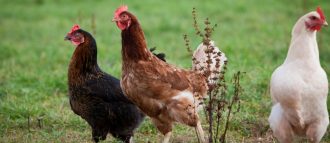

This method cannot accurately determine the gender, but at the initial stage it can be used.
How to find out your gender early in the first weeks
When the chickens are 3-4 weeks old, the sex of the bird is determined by the appearance and habits of the bird. First of all, this is body size: males grow faster and will be larger in size than females, but feathers on females grow thicker.
By observing the behavior of the chickens, it is also possible to determine with a high probability where the future hen is and where the cockerel is. Roosters lead an active lifestyle, fuss, run and fight with their peers for a place on the bedding or food, and chickens behave peacefully and do not show aggression.
How to distinguish between chickens in poultry farms
Chickens of two types are raised in poultry farms: broilers for meat production and layers. In conveyor production, the sex of a bird is determined by two rows of feathers located on the wings. If 1 row of feathers is shorter than the other, then this is a female, and if 2 rows of feathers are of the same height, then this is a male.
It is even easier to determine the gender if specially bred crosses are used for production. The difference in color appears already at the age of one day. Chickens have beige feathers and males have white plumage.
Chick color
For some breeds, chick sorting by sex can be done by color. Such breeds are called autosex.
Removal methods
The need to trim the spurs of a domestic rooster occurs quite often. Regular domestic roosters do not participate in battles, so they do not need weapons in the form of spurs. Moreover, their aggressive behavior and traumatic fights are completely undesirable. Also, the rooster can accidentally injure the hens or the owner with long sharp spurs.
In addition, often the rooster's spur grows so much that it bends and bites into its paw, causing discomfort and injury to the bird. In this case, the scion must be removed immediately.
Removing horny growths from the legs of a rooster is a rather difficult task. This is due to the fact that the bird will protest violently and it is very difficult to cope with it. In addition, it must be borne in mind that there are blood vessels inside the spur, so the procedure can cause serious blood loss.
Of course, it is better if the veterinarian removes the spurs of the rooster - he uses a special tool and sedatives so that the bird experiences less stress. However, if it is not possible to consult a specialist, you can cope with the task yourself.
Why do roosters fight among themselves? How should a poultry farmer behave to stop bird aggression?
To read
Why do roosters crow in the morning, afternoon and evening? How to stop a rooster from screaming too loudly?
More details
Can chickens lay eggs without a rooster, what role does a rooster play in a hen house, and can you do without it?
Look
The main reasons for the aggressive behavior of the rooster. What to do if a feathered aggressor attacks a person?
Further
Giants of the chicken world: breeds of chickens with officially registered heavyweight roosters
To read
How to tell a chicken from a rooster at 3-4 months
The belonging of a bird at the age of 3-4 months to one or another sex is easily determined by its weight, plumage, behavior. If you only want females or males, then these are the signs you need to know.
Plumage
A characteristic feature of the rooster is the presence of bright and long multi-colored feathers in the tail, the hen has a pale and short feather on the tail. Feathers on the neck are also different: in the rooster, they are long and sharp, and in the hen, they are short and rounded at the end.
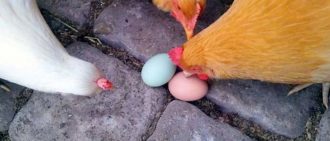

Bright, red scallop - this is the main decoration of the male, in the chicken it is small and faded.
Other age signs
An adult rooster has large legs and spurs grow for defense. Its weight is 1.5-2 times more than that of a chicken. Roosters often fight among themselves, some breeds show aggression towards humans.
A good way to determine the floor by the footprints left on the ground. The structure of the legs of birds is different. The rooster has the front fingers wide apart, and the hind toe is short and extended to the side. The footprint is shaped like a cross. In the chicken, the toes are gathered together, and the hind toe is not extended.
How many fingers does a chicken have
Fine
The usual number of fingers for chickens and roosters is four.Three of them look forward, one - back. This position allows individuals to maintain balance.
You can find animals with a lot of fingers. Often a rooster with a spur is taken for a "five-finger" one. Although it is formed from a solid growth, it cannot perform the functions of a finger.
Pedigree trait
There is a breed of chickens, the characteristic feature of which is the presence of five fingers. This is a faverole.
The homeland of birds is France. Initially, the breed was bred only for the sake of eggs and meat. But today it is considered decorative and participates in all kinds of exhibitions.
A chicken with four toes is discarded immediately. Roosters of this species have spurs, which is why they are often mistaken for "six-fingered". A full description is given in the article "Description of the faverol chicken breed".
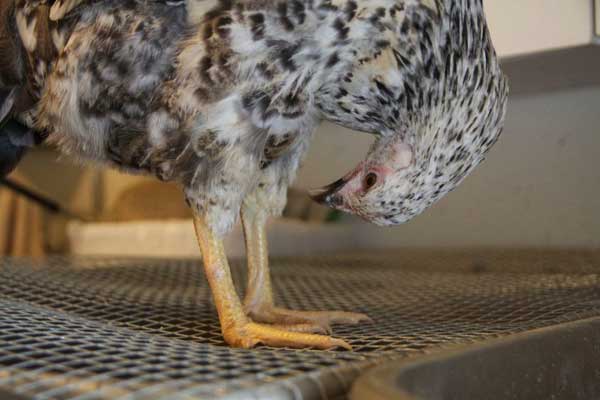

Deviations
Another common reason for the presence of "extra" fingers in chickens and roosters is genetic abnormalities.
This happens with multiple breeding of closely related chickens. In this case, there can be more than five fingers. On different paws, their number will also not be the same.
These chicks are not considered a marriage. Their productivity is not inferior in terms of indicators to "ordinary" representatives of their breed.
But it is not worth using chickens and roosters with genetic abnormalities in further breeding. Otherwise, the next generation will be even more different from the norm.
How to tell an adult chicken from a rooster
In adult chickens, the main methods for distinguishing by sex are the same as in the age of 3-4 months, only they are much more pronounced. The easiest and most easily accessible way is to observe how the birds make sounds. Only the rooster crows, the hen coughs.
There is another way of sex determination available for small farms. If there are nests in the coop, then watch how your birds are settling for the night. The hen always roosts, and the rooster can sleep in the nest.
For untrained city dwellers, and those who already deal with birds, it is not always easy to distinguish between chickens by gender. For those who are interested and need to know how to distinguish a rooster from a chicken, this article will be useful.
Paw problems
Common Causes
Chicken feet are often exposed to various sores. Some breeders believe genetic abnormalities are the cause. But this is not the case. Chickens with a large number of toes often live long and rarely get sick.
Certain factors influence the appearance of diseases.
Poor housing: some breeds of chickens are not adapted to being kept in cages or cramped chicken coops. They need space and regular activity. Otherwise, chicken legs will atrophy and undergo deformation.
Poor diet: a deficiency of nutrients leads to diseases of the legs. How to properly formulate a diet, read the article "How to feed chickens at home from the first days of life."
Temperature violations. The article "What should be the temperature in the chicken coop in winter and summer" will help to normalize it.
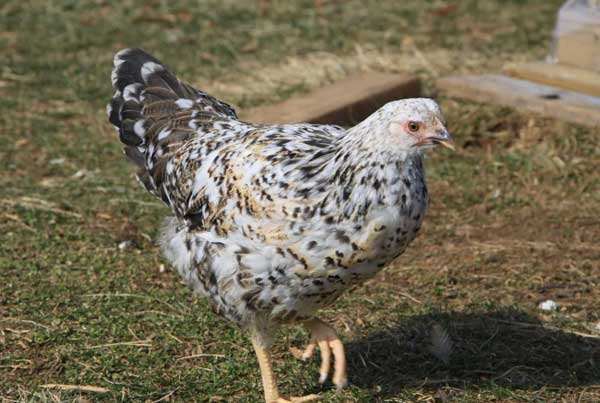

Diseases
Often the paws of chickens and roosters suffer from:
- Gout: Due to the accumulation of uric acid in the joints, the legs of birds sometimes suffer irreversible changes.
- Knemidocoptosis caused by chicken scabies mites.
- Curly fingers: pathology arising from a lack of vitamin B2.
Find out what other diseases of the paws in chickens and roosters are called, and how to get rid of them, in the article "On diseases of the feet in chickens and their treatment."
Dear readers, we hope the article was useful. If you want to discuss what you have read, comments are open. Invite your friends to repost to familiarize themselves with an interesting topic and your notes. Special thanks for the 5 stars.
How to determine where the rooster is and where is the hen?
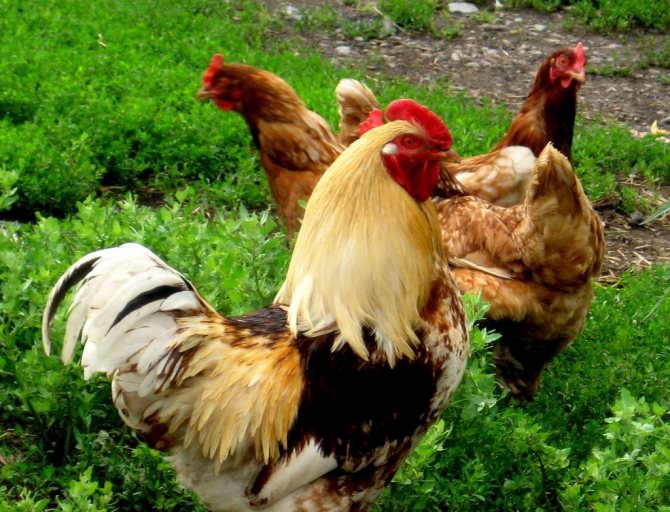

Experienced poultry farmers distinguish even only hatched chickens by sex, although to unprepared lay people they all seem to be the same yellow lumps.
The most modern and reliable way to distinguish females from males is DNA analysis. Of course, the owners of small farms are unlikely to have so much money and desire to use this research method.
Nevertheless, there are some signs by which it is possible to distinguish between females and males.
The difference between a rooster and a chicken in size
Those who are just beginning to comprehend the basics of poultry often believe that rooster chickens are larger than future hens. Yes, it is difficult to argue with this, but the difference in weight in chickens is only 1-2 grams, it is impossible to determine it by eye.
Even if you weigh chickens on a scale, you need to think about the fact that they are very mobile, so it is unlikely that it will be possible to fix the exact weight.
It is worth remembering about the peculiarities of different breeds of chickens: some chickens may be heavier than their "brothers". For those who want to determine the sex of a bird, it is better to pay attention not to weight, but to external data.
Males, even at one day of age, usually have stronger and wider legs, a large head and round outlines.
On the wings
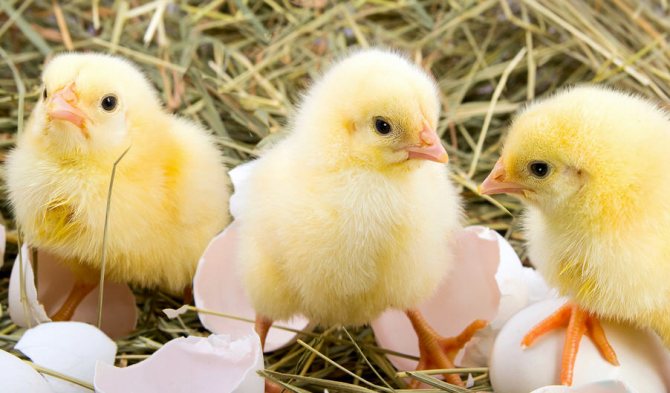

The growth of feathers and their features are visible already in the first 24 hours after hatching, therefore even specialists on large lands use the method of determining the sex by the wings.
The accuracy of this method is approximately 60-80%, in addition, you can use one or two more methods to make sure the conclusions are correct.
The feathers on the wings of future roosters are longer, and their span is wider than that of females. In chickens, plumage appears earlier, but it is not so dense and on their wings the feathers differ from each other in length.
To verify this, the breeder puts the chicken in his hand and gently spreads its wing. If a male is in the hand, then all his feathers will be the same length, light and densely located. Feathers of chickens are not so thick and they have different lengths. Only the first 7 feathers are of the same length.
Determination of the sex of young animals
It is easy to distinguish monthly chickens from males by the manner of their behavior. In a stressful situation, the roosters immediately assume a defensive posture and prepare for a fight. Chickens are more fearful. They lower their heads and press themselves to the ground. This method should not be abused. Frequent stressful situations at the age of one month have a negative effect on the condition of birds, lead to loss of appetite and sleep disturbances, which negatively affects weight gain.
If the young have already had a comb, then it is easy to distinguish the sex by its color. In roosters it is red, and in chickens it is yellowish. Pay attention to its size. In roosters, it is much larger. Another sign that allows you to determine the sex of a matured chick is the time of plumage. Laying hens change down to feather at least a day earlier than roosters. Sometimes roosters fledge 2-3 weeks later than layers. If we are talking about colored breeds, then the fluff on the head is painted in a different color, there are colored stripes. Roosters have no spots or stripes on their heads.
It is easy to distinguish matured birds by the presence of beards and spurs, which appear in roosters at 2.5-3 months. Also during this period, their tail is lengthened.
At different ages
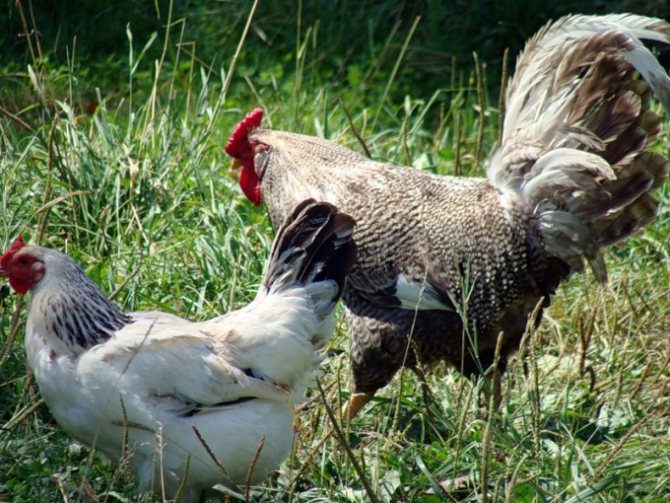

You can distinguish between roosters and chickens at different ages, knowing some of the features of this age. Experienced poultry farmers have made sure that chicks and adults can be identified.
Daily age
It is almost impossible to independently see the differences in chickens in 1 day. Of course, you can try the reflex method and place the chick in the palm of your hand with the tummy up. In this case, the male will resist and will actively move, and the female will remain calm.
Usually, in poultry farms, chickens are separated from roosters in advance, because females are slightly more expensive.
Weekly age
Differences can be seen in a week-old chick using the reflex method or the position of the wings. These birds are old enough to see their reactions or to see the structure of the feathers on their wings.
Monthly age
At 1 month old, chicks are easy to distinguish externally. Females plumage earlier and faster than males. But the males are larger and more massive. At about the same age, you can notice the external sexual characteristics: the genital tubercle of the cock will rise above the surface, in contrast to the neat nodule of the chicken.
Age 2-4 months
By the age of two months, the males acquire a comb and a beard, they clearly have spurs, and their paws become more powerful and longer. Braids (rounded feathers) appear in the tails of males. Females are not very attractive.
At 3 months, the differences become even more noticeable. The crest, beard and spurs become even larger. By the same age, the cockerel may begin to "develop a voice." At first, it's just too active squeak and shouting of other chickens.
Age from 5 months
At 5-6 months, hens can begin to lay eggs, which will be the most accurate sex determination. Males start crowing in the morning, they are also the first to approach the stern, and then call the chickens with a characteristic sound. Half-year-old birds are already adults, they can be easily distinguished even by a person who is not very experienced in poultry farming.
Conditions of detention
Faverol chickens are unpretentious in care, but they do not tolerate cages well. Due to their tendency to be overweight, they need constant free range so that there is room to warm up. In extreme cases, it is permissible to provide them with spacious enclosures. Being in the fresh air most of the time, they get the prevailing part of vitamins and minerals from pasture. In addition, strong immunity is developed, and birds are less likely to get sick.
There is no need to enclose the territory with high fences, since they do not tend to fly. Birds of this breed are kept apart so as not to spoil the high-quality gene pool.
this leads to the development of diseases. In addition, in cramped conditions, the hens trample on the feed, which increases its consumption. Feeders are placed on a raised platform so that it is not possible to scatter feed on the sides. The perches are made wide, round, and ladders are used to climb up. Such a measure prevents birds from falling and injuring themselves.
Faverol chickens do not tolerate cages and aviaries well. Easily fattening birds need conditions for physical activity.
Free-range chickens are less likely to get sick, they have a high percentage of egg fertilization, since they have the opportunity to receive trace elements, vitamins, minerals from pasture.
Housewives appreciate faveroli for their delicacy; when searching for insects, they do not break the beds and flower beds.
They don't like to fly. There is no need to enclose the walk high.
Important! To preserve the productive qualities, the characteristic features of birds, it is necessary to keep them separately from representatives of other breeds.

